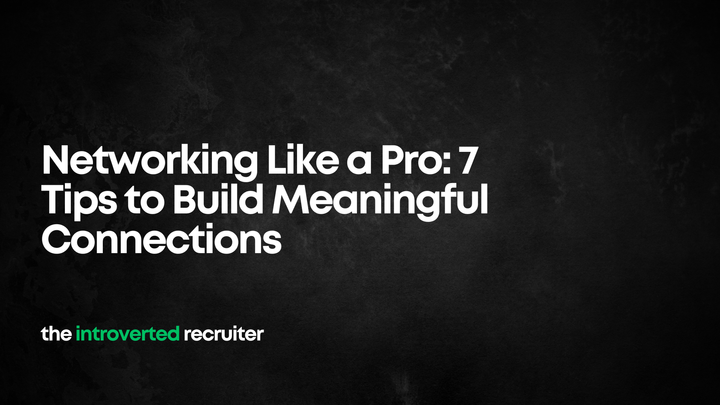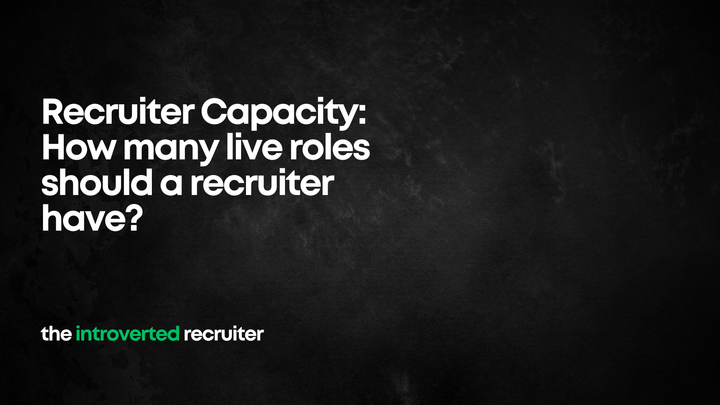What’s The Future For Inhouse Talent Acquisition Teams?

The last few years have been really tough for Talent Acquisition functions right across the world.
First there was COVID, all hiring pretty much went on hold and TA folk were laid off in their hundreds, if not thousands.
Then came the boom of 2022, when hiring a recruiter was statistically more difficult than hiring a software engineer, which we all know has always been classed as a “hard to fill” role.
Companies suddenly had to grow, they had no TA or Recruitment teams to meet this demand, so we saw that once in a lifetime event when recruiters where the most in-demand talent on the market.
Salaries were inflated, internal TA teams had their headcounts increased, most TA functions pretty much had carte blanche to meet the business demand.
But then the tail end of 2022 came, and into 2023 we saw hiring freezes across most sectors. Again recruiters were the first to face the brunt of it. Mass layoffs ensued, those impacted first where the people who do the recruiting, the TA folk.
But what does that when hiring levels return to whatever “normal” looks like? Are we going to repeat the mistakes of 2022 and rehire at mass, restructure our TA Teams and then when some type of slow down comes repeat the same cycle?
I’ve built and lead internal TA teams, here’s what I’d do.
I’d start looking at a hybrid model whereby I have a core internal TA function that can meet around 60-70% of the company’s “normal” hiring demand.
To cover the remaining demand, I’d bring in an RPO or more flexible embedded provider.
Well of course you’d say that Lee because you just so happen to work for an embedded provider, you’re massively bias.
Maybe that’s true, but it also makes a hell of a lot of sense. Here’s why.
If hiring demand suddenly increases way beyond “normal” then I simply get more resource from the provider, when demand slows back down I decrease the resource from the provider. I’ve not had to hire anybody, I’ve not had to lay anybody off.
If demand falls off a cliff, I don’t need to lay anybody off, I just reduce the demand from the provider and then bring them back in when demand returns.
If there’s a shift in the nature of demand, tech hiring slows right down and we need to hire heavily in GTM. Do I ask my team of tech recruiters to start working on vacancies they have no expertise in or real desire to work on? Or do I just ask the provider to switch out one of their tech recruiters for a GTM recruiter?
But what about the quality of recruiters I get from embedded or RPO, they’re not as experienced or as good as the ones I could hire myself? I guess that depends on the quality of the provider you go with, for some that’s very true but for others it’s very much not the case.
But RPOs and Embedded providers are expensive? Are they really? If you factor in the costs of hiring folk, training them, their tooling (LinkedIn Recruiter licenses ain’t cheap!) and then the severance you’d have to pay when you inevitably have to lay them off again then the providers are actually costing you about the same as hiring, if not less.
And there’s another huge benefit, one that doesn’t cost a penny but can provide a huge amount of value. You are not just getting the experience and knowledge of the recruiters from the provider, you are also getting access to the knowledge and experience of their entire business.
So are we going to keep repeating the cycle of rebuilding our TA functions or are we going to start looking at models that give us more flexibility and agility?
The Introverted Recruiter is a reader-supported publication. To receive new posts and support my work, consider becoming a free or paid subscriber.
Newsletter
Sign up for my free newsletter on SubStack for all the latest content straight into your inbox.
Follow Me
Find me on LinkedIn , TikTok , YouTube or Instagram where I share lot’s of practical no nonsense advice.



